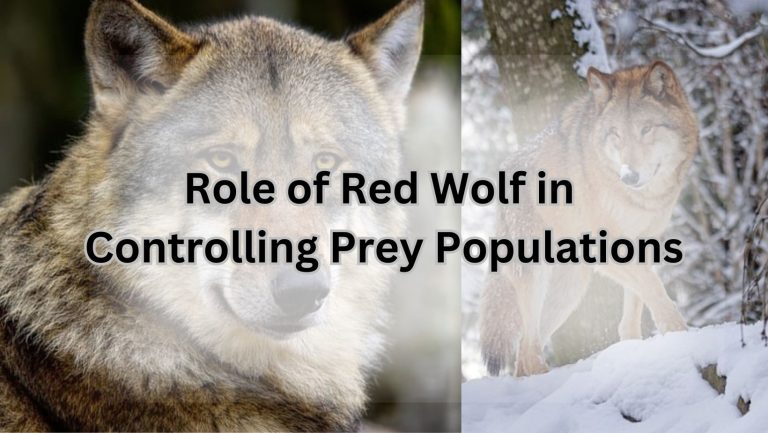Eastern Timber Wolf: Unleash the Wild Side of Canids!

The Timber Tale: Unveiling the Eastern Timber Wolf
Have you ever ventured into the enchanting world of the Eastern Timber Wolf, that mystical subspecies of the gray wolf known as Canis lupus lycaon? Brace yourself for a journey into the heart of North America’s wilderness, where these majestic creatures reign supreme, ensuring nature’s delicate equilibrium.
Physical Elegance: A Symphony in Gray
Picture this: a canvas painted in hues of gray, adorned with subtle hints of brown and black. That’s the Eastern Timber Wolf’s coat – a masterpiece of nature. These wolves, the heavyweight champions of North American canids, stand tall at 26 inches, weighing up to a whopping 100 pounds. Their powerful jaws and razor-sharp teeth tell tales of a predator perfectly designed for the dance of survival.
Habitat Harmony: Woods, Mountains, and Swamps
Enter the Eastern Timber Wolf’s playground – the lush forests of the northeastern United States and the southeastern corners of Canada. But these wolves are not picky; they thrive in diverse habitats, from misty mountains to murky swamps. It’s not just about finding a home; it’s about adapting and thriving amidst the rich tapestry of nature.
Behavioral Ballet: Pack Dynamics Unleashed
Meet the socialites of the wolf world – the Eastern Timber Wolves. Living in family groups, led by the regal alpha pair, these wolves redefine teamwork. Caring for the young, hunting together, and communicating with an array of howls, barks, and body language – it’s a behavioral ballet that captivates the forest audience.
As you wander through the woods of the northeastern United States or southeastern Canada, keep your senses tuned for a glimpse of the elusive Eastern Timber Wolf. They’re not just wolves; they’re the guardians of the wild, reminding us of the intricate web that binds us to nature’s embrace. Stay with us as we unravel more about these enchanting creatures and their vital role in preserving the magic of the natural world.
Importance of the Eastern Timber Wolf in Ecosystem
Role of the Eastern Timber Wolf in Maintaining Balance
Ah, the majestic Eastern Timber Wolf plays a crucial role in maintaining the delicate balance of the ecosystem. These magnificent creatures are top predators, keeping the population of herbivores in check. Without them, the herbivore population would skyrocket, leading to overgrazing and potentially devastating consequences for plant life.
Impact of Eastern Timber Wolf Decline on Ecosystem
Unfortunately, the Eastern Timber Wolf population has been on the decline due to various factors such as habitat loss and human interference. This decline has had a ripple effect on the ecosystem, causing disruptions in the food chain and leading to imbalances in the ecosystem. It’s like removing a key player from a chess game – things just don’t work the same way without them.
Conservation Efforts to Protect the Eastern Timber Wolf
Thankfully, there are dedicated conservation efforts in place to protect the Eastern Timber Wolf and ensure their survival for future generations. Organizations are working tirelessly to preserve their habitats, raise awareness about their importance, and implement measures to mitigate human-wolf conflicts. It’s heartwarming to see people coming together to protect these magnificent creatures and the ecosystem they call home.
So, the next time you hear a wolf howl in the distance, remember the vital role they play in maintaining the balance of nature. The Eastern Timber Wolf may be a fierce predator, but they are also a crucial piece of the puzzle that keeps our ecosystem thriving. Let’s continue to support conservation efforts and ensure that these magnificent creatures roam the forests for generations to come.
Eastern Timber Wolf Diet and Hunting Habits
When it comes to the Eastern Timber Wolf, also known as Canis lupus lycaon, their diet and hunting habits are truly fascinating. Let’s dive into the world of these majestic creatures and explore what they feast on and how they hunt.
Prey of the Eastern Timber Wolf
The Eastern Timber Wolf is a skilled predator that primarily preys on a variety of animals. Their diet includes deer, moose, beavers, rabbits, and even smaller mammals like rodents. These wolves are known for their ability to take down large prey, making them a crucial part of the ecosystem.
Hunting Techniques of the Eastern Timber Wolf
When it comes to hunting, Eastern Timber Wolves are known for their teamwork and strategic approach. They often hunt in packs, using their keen sense of smell and excellent coordination to track down prey. Once they locate a target, they work together to surround and chase it until it becomes exhausted, making it easier for them to take it down.
Relationship with Other Predators in the Ecosystem
The Eastern Timber Wolf plays a vital role in maintaining the balance of the ecosystem. While they may compete with other predators like cougars and bears for food, they also help regulate the populations of prey animals, preventing overpopulation and ensuring the health of the ecosystem as a whole. Their presence in the food chain is crucial for the overall biodiversity of the region.
So, the next time you hear a pack of Eastern Timber Wolves howling in the distance, remember that they are not just majestic creatures but also essential players in the intricate web of life in the wilderness.
Threats to the Eastern Timber Wolf Population
As a devoted Canid Wild Life Lover, I have witnessed firsthand the challenges faced by the majestic Eastern Timber Wolf. Let’s dive into the various threats that endanger these fascinating creatures.
Human Encroachment on Eastern Timber Wolf Habitat
Picture this: a cozy den nestled in the heart of the forest, home to a pack of Eastern Timber Wolves. Now, imagine the looming threat of human encroachment disrupting this idyllic setting. As urbanization spreads, the wolves’ habitat shrinks, leading to increased conflicts with humans. It’s a tough world out there for our furry friends.
Climate Change Effects on Eastern Timber Wolf
Climate change isn’t just a buzzword; it’s a real menace to the Eastern Timber Wolf population. Rising temperatures alter the wolves’ natural habitats, affecting their prey availability and migration patterns. These wolves are facing a changing world, and it’s up to us to ensure they can adapt and thrive.
Illegal Poaching and Hunting of Eastern Timber Wolf
Now, let’s talk about the dark side of the story – illegal poaching and hunting. These magnificent creatures are targeted for their fur, body parts, and sometimes just for sport. It’s a heartbreaking reality that threatens the very existence of the Eastern Timber Wolf. We must stand up against these despicable acts and protect these wolves at all costs.
Eastern Timber Wolf Reproduction and Family Life
Ah, the Eastern Timber Wolf, also known as Canis lupus lycaon, a majestic creature with a fascinating family life. Let’s dive into the intriguing world of their reproduction and pack dynamics!
Mating Behavior of the Eastern Timber Wolf
When it comes to romance, Eastern Timber Wolves don’t mess around. During the breeding season, which typically occurs in late winter, these wolves engage in elaborate courtship rituals. Males will howl to attract females, and once a pair has bonded, they will mate for life. Talk about relationship goals!
Eastern Timber Wolf Pup Development
After a successful courtship, the female Eastern Timber Wolf will give birth to a litter of adorable pups. These little bundles of fur are born blind and deaf, relying on their keen sense of smell to find their mother’s milk. As they grow, the pups are cared for by the entire pack, with older siblings helping to babysit and teach them essential survival skills. It truly takes a pack to raise a wolf!
Pack Dynamics and Hierarchies within Eastern Timber Wolf Families
Within an Eastern Timber Wolf pack, there is a strict hierarchy that determines each member’s rank and role. The alpha pair, typically the oldest and strongest wolves, are the leaders of the pack. They make important decisions, such as when to hunt and where to den. Beneath them are the beta wolves, who help enforce the rules and maintain order within the pack. It’s like a wolf version of a royal court!
As the pups grow older, they may challenge the alpha pair for dominance, leading to intense power struggles within the pack. These dynamics ensure that only the strongest and most capable wolves lead the group, ultimately increasing their chances of survival in the wild.
Eastern Timber Wolf Adaptations to Survive in the Wild
When it comes to the Eastern Timber Wolf, also known as Canis lupus lycaon, these majestic creatures have evolved some incredible adaptations to thrive in the wild. Let’s take a closer look at how these wolves have adapted to their environment.
Physical Adaptations of the Eastern Timber Wolf
The Eastern Timber Wolf, a subspecies of the Gray Wolf, boasts a beautiful coat that helps them blend into their surroundings. Their thick fur provides insulation against the harsh winter cold, allowing them to survive in the frigid temperatures of their habitat. Their strong jaws and sharp teeth are perfectly designed for hunting and tearing into prey, making them efficient predators in the wild.
Behavioral Adaptations of the Eastern Timber Wolf
One of the most fascinating behavioral adaptations of the Eastern Timber Wolf is their social structure within a pack. These wolves are highly social animals, living in packs led by an alpha pair. This pack mentality allows them to work together to hunt, raise their young, and defend their territory effectively. Their communication through howls and body language helps them coordinate their movements and maintain their pack’s cohesion.
Survival Instincts and Strategies of the Eastern Timber Wolf
The Eastern Timber Wolf’s keen senses, including their acute sense of smell and hearing, play a crucial role in their survival. These wolves rely on their senses to detect prey, avoid predators, and communicate with other pack members. Their strong territorial instincts drive them to mark their territory with scent markings, warning other wolves to stay away.
Overall, the Eastern Timber Wolf’s adaptations have allowed them to thrive in the wild for centuries. Their physical, behavioral, and survival instincts make them formidable predators and essential members of their ecosystem. So, the next time you hear a wolf howl in the distance, remember the incredible adaptations that allow these majestic creatures to survive in the wild.
Untangling the Myths: Eastern Timber Wolf Unveiled
In the enchanting lore of the Eastern Timber Wolf, myths and misconceptions have woven a tapestry of mystery and misunderstanding. Let’s venture into the heart of these cultural representations, unraveling the captivating truths that defy centuries-old tales.
Theatrics of Representation: Cultural Representations of the Eastern Timber Wolf
Picture the Eastern Timber Wolf in our cultural canvas – from vicious predators to mystical beings, they’ve played many roles. Our perceptions are painted with strokes of fear and awe, crafting a narrative where reality and fantasy dance together. But are these wolves truly the villains or the enchanting characters we’ve been led to believe?
Moonlit Misunderstandings: Common Misunderstandings about Eastern Timber Wolf Behavior
Enter the moonlit myths, where the Eastern Timber Wolf is often portrayed as a perpetual howler, serenading the moon each night. In truth, their howls are a nuanced language – a symphony of communication, territory marking, and pack camaraderie. They’re not nocturnal crooners; they’re poets with a purpose.
Myth-Busting Expedition: Debunking Myths Surrounding the Eastern Timber Wolf
Time to debunk the big one – the myth that Eastern Timber Wolves are a menace to humans. Step into reality: these wolves aren’t lurking in the shadows, waiting to pounce. Shy and elusive, they prefer to keep their distance from human realms. Instead of threats, they’re stewards of balance, gracefully choreographing the ecosystem by controlling prey populations.
In the saga of Eastern Timber Wolves, it’s not just about separating fact from fiction; it’s about rewriting their narrative. They’re not mere characters in our cultural story; they’re living, breathing wonders deserving of understanding and appreciation. Let’s peel away the layers of myth, revealing the true essence of the Eastern Timber Wolf – a creature whose reality is as captivating as the tales that surround it.
The Lone Star of Wolves: Eastern Timber Wolf vs. Other Wolf Species
In the enchanting realm of wolves, the Eastern Timber Wolf emerges as a distinctive character, donning its own unique traits and quirks. Let’s unravel the intriguing comparisons between this captivating species and its counterparts, the Gray Wolf and the Red Wolf.
Dance of Size and Build: Key Differences between Eastern Timber Wolf and Gray Wolf
Meet the Eastern Timber Wolf, Canis lupus lycaon, a smaller yet equally enchanting cousin of the Gray Wolf. Despite sharing the Canis lupus family tree, these wolves boast distinct characteristics. Picture the Eastern Timber Wolf as the sleek athlete, smaller and more slender than its Gray Wolf relative. It parades a lighter coat, a canvas brushed with shades of gray and brown, setting it apart in the grand wolf tapestry.
Red or Not: Comparison of Eastern Timber Wolf and Red Wolf
Enter the Red Wolf, a fellow player in the wolf saga. Though occasionally confused, the Eastern Timber Wolf and the Red Wolf carry their unique passports. The Red Wolf is the pint-sized artist, boasting a smaller frame and a distinctive reddish coat. While both species tread the endangered path, they dance to different beats in habitats and behaviors, creating their own stories in the vast wilderness.
Versatility Unleashed: Unique Characteristics of the Eastern Timber Wolf
Behold the Eastern Timber Wolf, the chameleon of wolfdom. Its versatility knows no bounds as it gracefully maneuvers through forests, grasslands, and beyond. In the social ballroom, this wolf takes center stage, leading tight-knit family packs in a dance of unity. Hunting and territory protection become a symphony orchestrated by these charismatic predators.
The Eastern Timber Wolf is no ordinary character; it’s a star with its own spotlight in the wolf constellation. By understanding its nuances, we unlock the secrets of a captivating species, enriching our appreciation for the diverse tapestry of the wolf kingdom. In the grand theater of nature, the Eastern Timber Wolf is not just a participant; it’s a headliner, a beacon of the wild, beckoning us to explore and celebrate the wonders of the untamed world.
Unlocking the Timber Chronicles: Scientific Studies on Eastern Timber Wolf Behavior
Embark on a journey into the heart of the Eastern Timber Wolf’s world, where scientific studies serve as the lanterns guiding us through the shadows. Canis lupus lycaon, the enigmatic Eastern Timber Wolf, has become the star of numerous research endeavors, each delving into the intricacies of their behavior. Picture researchers as storytellers, unveiling the social dramas, hunting theatrics, and communication symphonies within these majestic packs. These studies aren’t just scientific; they’re windows into the captivating lives of the Eastern Timber Wolf.
Sleuths in the Wild: Tracking and Monitoring Eastern Timber Wolf Populations
Imagine the challenge – tracking elusive wolves through dense forests, where every footprint tells a story. Yet, researchers, armed with determination and cutting-edge technology, have become the sleuths of the wild. GPS collars and camera traps act as their trusty sidekicks, revealing the hidden movements and secret lives of Eastern Timber Wolf populations. It’s a high-stakes game of hide-and-seek where every tracked wolf becomes a victory for conservation.
Conservation Marvels: Contributions of Research to Eastern Timber Wolf Conservation
The Eastern Timber Wolf faces a myriad of threats, from encroaching human settlements to vanishing habitats. However, the hero in this story is research – the unsung champion of conservation. Thanks to these studies, conservationists have unlocked the playbook of the Eastern Timber Wolf. They now understand the dance of survival these wolves perform and the vulnerabilities that need protection. Research isn’t just data on paper; it’s the blueprint for a better, safer future for the Timber Wolf.
In the mesmerizing saga of wildlife protection, the Eastern Timber Wolf stands as a majestic protagonist. Scientific studies paint a vivid canvas, tracking efforts unfold as thrilling mysteries, and conservation strategies craft a heroic future. Together, let’s script a wild tale where the Timber Wolf reigns eternal, a symbol of nature’s indomitable spirit.
Challenges Facing the Eastern Timber Wolf Population
Being a fervent Canid Wild Life Lover, I’ve observed firsthand the hurdles looming over the Eastern Timber Wolf population. It’s not just a tale of survival; it’s a battle against the encroaching shadows of habitat loss and the ever-looming specter of human-wolf conflicts. These majestic creatures, once rulers of the wild, are grappling with the harsh realities of the modern world.
A Glimmer of Hope: Potential Solutions for Eastern Timber Wolf Conservation
Amidst the challenges, a beacon of hope emerges. Conservation warriors, armed with passion and dedication, are stepping up to defend the Eastern Timber Wolf. Habitat restoration becomes the sword, slashing through the vines of encroachment, providing these wolves a sanctuary to call home. Education programs act as shields, defending against the ignorance that fuels conflicts. It’s a battle strategy designed to rewrite the narrative of their struggle.
The Pivotal Role: Importance of Continued Efforts to Protect the Eastern Timber Wolf
Why should we fight for the Eastern Timber Wolf? Because they are the unsung heroes of our ecosystems. Picture this: a domino effect triggered by their existence – a balanced dance of predator and prey, flora and fauna. Without them, the delicate harmony falters.
These wolves are not just subjects of admiration; they are architects of biodiversity. As Canid Wild Life Lovers, it’s our duty to rally behind continued conservation efforts. Our respect for these creatures should translate into action – a collective roar echoing through the valleys, declaring our commitment to their protection.
In the grand theater of nature, the Eastern Timber Wolf takes center stage, awaiting a standing ovation from a world that recognizes their importance. So, let’s raise our voices, roll up our sleeves, and ensure that these majestic creatures continue to roam the forests, leaving footprints of resilience for generations to come. The Eastern Timber Wolf isn’t just a survivor; it’s a symbol of our shared responsibility to safeguard the wild wonders that make our world extraordinary.








